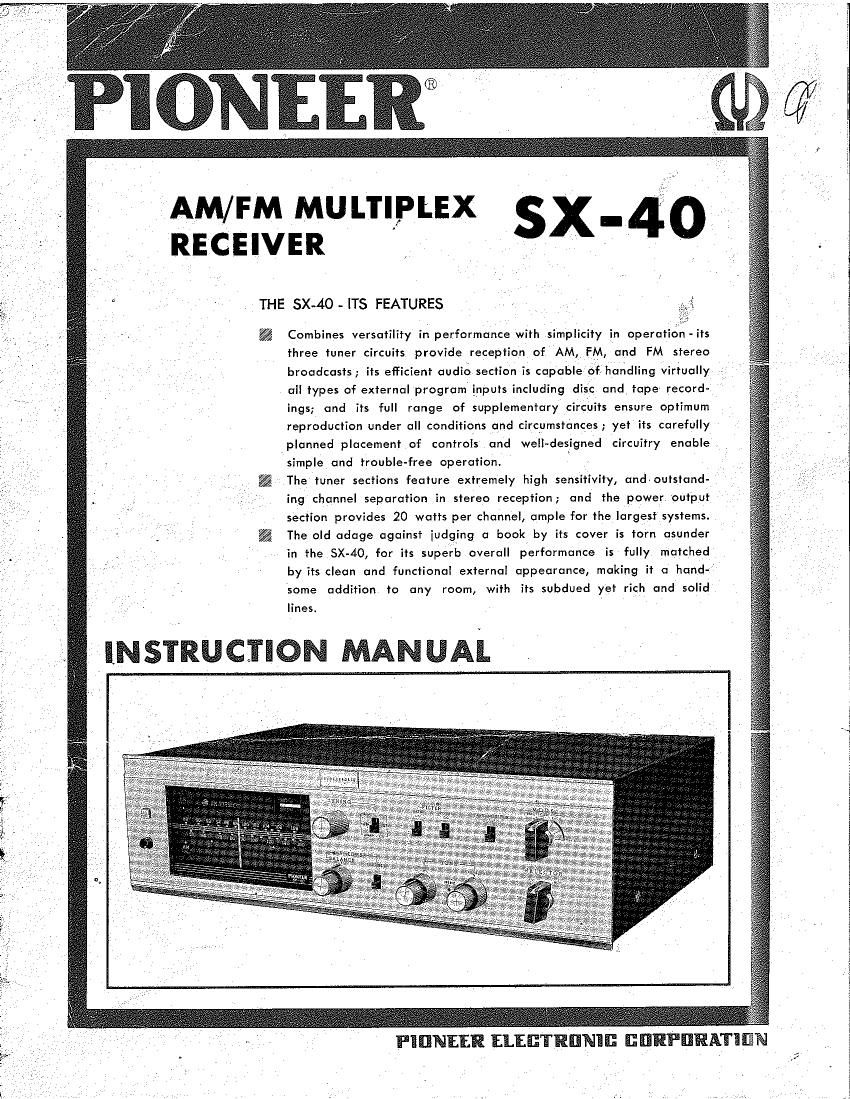Pioneer sx 40 owners manual
This is the 7 pages manual for pioneer sx 40 owners manual.
Read or download the pdf for free. If you want to contribute, please upload pdfs to audioservicemanuals.wetransfer.com.
Page: 1 / 7
